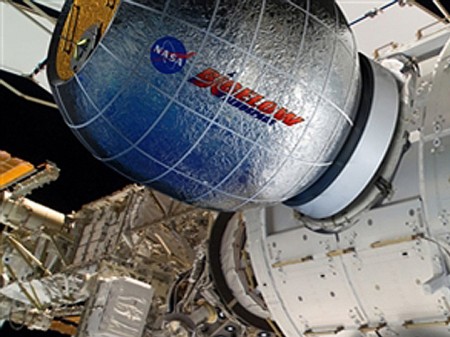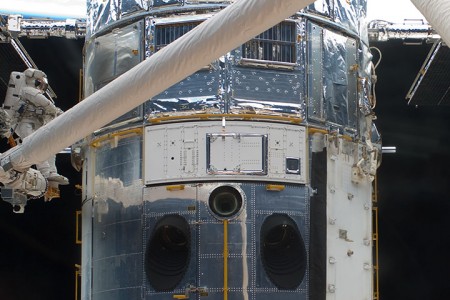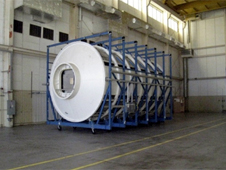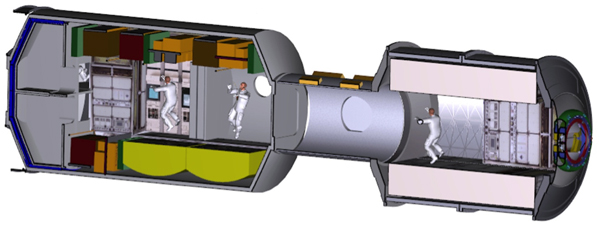January 1, 2016 – Welcome to the New Year and what should prove to be an exciting one for scientific learning and technological advances. We continue to see knowledge doubling in shorter time periods much in the manner of Moore’s Law predictions on computing power. Whether the field is genomics, artificial intelligence, quantum computing, materials science, or space, 2016 will end with new advances that at the beginning of the year we may have not anticipated. So hold on to your seats as we propel ourselves into another year of 21st century technology.
For NASA, an unexpected increase in its budget has livened up the agency for 2016. The increase amounts to $1.3 billion U.S. In the past that would have been swallowed up by a little more than two Space Shuttle missions. But with the ending of that program, the money can be used for many interesting and exciting projects. One of them is the building of a deep space habitat for human occupancy, a home for crews not only in transit beyond the Moon but a technology that could serve as a base on the surface of Mars. The American Congress specifically directed the agency to take $55 million from that budget and build a prototype by 2018.
I have written here in the past about the steps needed for human exploration of outer space beyond low-Earth orbit (LEO). Since the Apollo Moon landings no human has ventured far from LEO which provides the protection of Earth’s tenuous upper atmosphere and the planet’s bulk and magnetic fields to shelter crews from solar flares and cosmic rays. In fact, the furthest out we have gone after 1972 is the repair missions (see picture below) to the Hubble Space Telescope, approximately 550 kilometers (340 miles) above the Earth.
Some engineers and scientists point out that LEO isn’t really outer space and until we address the challenges that Deep Space will throw at us we remain planet bound. Putting money into a program that perfects space habitat technology, therefore, should be financing well spent. And it will come in at 1/10th the cost of past Space Shuttle missions.
NASA, to execute its Asteroid Redirect Mission, needs this type of technology. A habitat adaptable for use in space for that mission, or for longer missions beyond the Moon to Mars, is a prerequisite. Any habitat designed for space would be equally useful on the lunar or Martian surface.
In Building 4649 tucked away at NASA’s Marshall Space Flight Center, a mock up of a proposed deep space habitat sits, far from being a finished design. Pictured below from a photograph taken in 2010, it appears to be a project orphan, long forgotten.
What will it take besides money from Congress to get NASA where it needs to go? A solution exists in seeking private-public partnerships with commercial aerospace companies. Such initiatives have always been part of NASA’s mandate from the early days of human space flight. The most recent success stories have cleared for flight two commercial carriers, SpaceX and Boeing, to provide crew replacement flights to the International Space Station (ISS).
Similarly NASA habitation partners are already in place. In a November 2015 Human Exploration and Operations Mission Directorate report, it references a number of commercial partners. Of the 72 milestones established by NASA related to human space flight for the year, the report states that 56 were met, a 78% success rate. Some of these successes covered habitation system requirements for living in Deep Space with a focus was on life-support systems, radiation protection, fire safety and durability. The objective for the last requirement specifically references achieving a habitation capable of enduring an 1,100 day mission. Contributors to these milestones included Bigelow Aerospace, the company that is scheduled to install one of its expandable habitable BEAM modules on ISS this year.
In addition to Bigelow, the report references Lockheed Martin, Boeing, Orbital ATK and Thales Alenia, the latter a principal contractor for ESA’s ATV cargo capsules used to resupply ISS. Not mentioned is SpaceX but I wouldn’t be surprised to find them involved in the near future. After all, Elon Musk, SpaceX founder, has stated in no uncertain terms that he founded his company to develop the technology to establish a permanent human presence on Mars.
In the short term NASA, in accepting the added $55 million, is required to provide the U.S. Congress with a report on its deep space habitation plans within the next 180 days.













